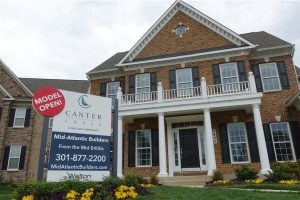The US economy’s uptick means the time’s right for global investors to add North American real estate to their portfolio allocation, as Walton Global Investment’s John Plastiras explains to AsianInvestor.
The economic headlines in North America right now, and especially the US, make for enjoyable reading for anyone focused on capitalising on the real estate market.
The US is enjoying its second-longest period of economic expansion in its history. The Federal Reserve said the labour market is nearing full employment, and this is in turn driving wage growth. In fact, over the 10 years from December 2007, there has been a positive net gain of over 9.31 million jobs.
This has inevitably translated to a bullish period for house price appreciation in the US; they rose 6.9% from the first quarterof 2017 to the first quarter of 2018, according to the Federal Housing Finance Agency (FHFA). Perhaps most notable is the fact that home prices rose in each of the 100 largest metropolitan areas in the US over the four quarters from early 2017.
“The market indicators show us that there are promising opportunities going forward,” said John Plastiras, executive vice president, real estate for Walton Global Investments. “US tax reforms are also contributing to the economic momentum.”
Mid-sized markets are also becoming more appealing. “Some of this is being driven by a flight to affordability, as well as lifestyle decisions,” he added.
Against this backdrop, homebuilder sentiment is at its highest level since around 2000. The annual rate of building permits stood at 1.36 million as of April 2018; the previous trough was 0.52 million in March 2009. “This continued increase in permits indicates the future demand of new residential construction and a sustained pipeline of work for developers in providing new building-lot inventory,” said Plastiras.
Resurgent real estate
This market trajectory bodes well for a firm like Walton, that has, over the most recent decade in its 35-plus year history, looked to capitalise on the real estate opportunities the US housing market presented as it emerged from the 2008 global financial crisis. While this period forced many top residential building companies in the US to go through corporate restructuring, streamlining their processes and re-sizing their workforces, some firms saw an opportunity to take a bolder approach.
For example, said Plastiras, Toll Brothers entered several markets in the West portion of the US, such as Denver and Seattle, and acquired local builders in California, Seattle and Boise. David Weekly Homes, meanwhile, expanded into new markets, namely Phoenix, Nashville and Portland.
That period also gave rise to the opportunity for land acquisition. “While some builders put land purchases on hold, others saw the recession as a time to bargain hunt. They leveraged the downturn to buy vacant developed lots and land at discounted prices,” explained Plastiras.
From Walton’s perspective, the firm’s generally bullish approach in looking to seize a real estate advantage has seen it acquire more than 33,993 hectares (ha) of land since 2007. As of March 2018, Walton owned just under 43,301 ha in Canada and the US; a stark difference from the 5.6ha the firm started with in 1979 when it was founded in Calgary, Canada.
Playing to key strengths
The firm prides itself on employing an asset management model to earn real estate-related revenues and generate profits.
Core to its focus, is working with best-in-class local and regional developers and home builders in each region where Walton has assets. It does this via potential partnership and joint venture structures, project management, debt management and innovative approaches, in addition to outright divestiture.
“We want to be able to monetise assets and generate profits for and with our investor partners across North America,” explained Plastiras.
This article originally appeared on AsianInvestor.



